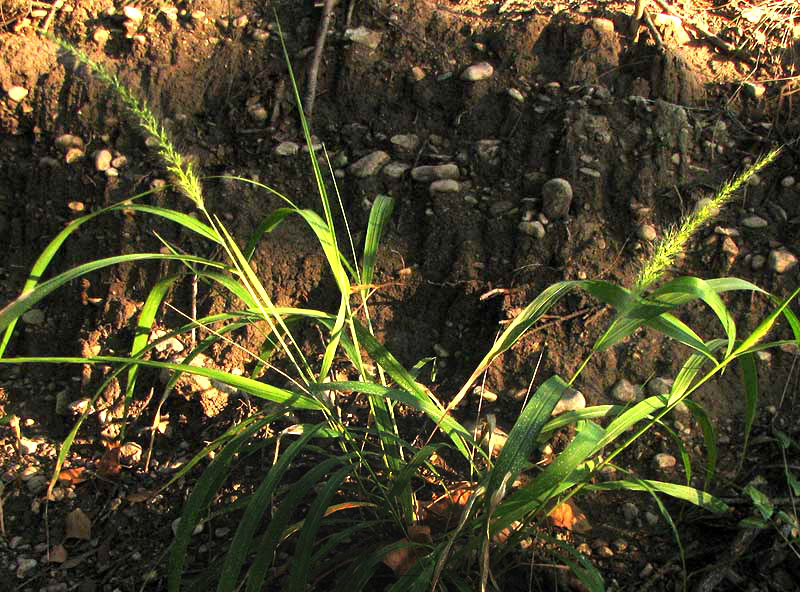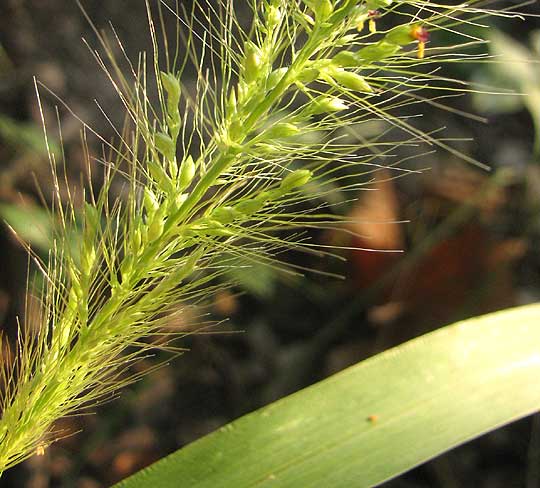Excerpts from Jim Conrad's
Naturalist Newsletter

from the September 8, 2013 Newsletter issued from the Frio Canyon Nature Education Center in the valley of the Dry Frio River in northern Uvalde County, southwestern Texas, on the southern border of the Edwards Plateau; elevation ~1750m (~5750 ft); N29.62°, W99.86°; USA
BRISTLEGRASS
At the semi-shaded rim of a steep-sided gully eroded into alluvium beside the Dry Frio there was a knee-high grass I hadn't noticed yet. It's shown above. A close-up showing clusters of elliptic spikelets, each subtended by one to three long, stiff bristles appears below:

If you pay attention to grasses, probably you recognize at once that this is a foxtail grass or bristlegrass, genus Setaria. Foxtails are recognized by their single, spike-like inflorescences atop leafy stems, with bristles such as these arising below each spikelet in our picture. When the spikelet falls off, the bristles remain on the stem, or rachis. In the Dry Frio Valley foxtails are common, mostly the Marsh or Yellow Bristlegrass.
However, you can see that the spike-like heads atop the stems of that common species are very different. Our gully-rim one's heads are longer, taper off toward their tops, and the spikelet clusters aren't as compactly grouped as on the Marsh Bristlegrass. This species definitely is different, something much less commonly encountered.
It's the Southwestern Bristlegrass, also known as Scheele's Bristlegrass and Scheele's Foxtail Grass. It's SETARIA SCHEELEI, mostly found in the arid northern half of Mexico but extending into the US from southern Arizona to Texas. Utah State's Manual of Grasses of North America says that in the US "it is particularly abundant in the limestone canyons of the Edwards Plateau of central Texas," and that's us, except that our part of the Plateau is in southwestern Texas.
Several foxtail species might turn up in our area but the only one that could easily be confused with Southwestern Bristlegrass is Grisebach's Bristlegrass, Setaria grisebachii. However, the spikelets in that species are not as slenderly elliptic as those of our gully-side Southwestern Bristlegrass -- they're more egg-shaped. Also the Grisebach species's inflorescence axis, or rachis, is stiffly long-hairy, while that of our Southwestern one has shorter, softer hairs.
What a pleasure meeting this new "variation on the foxtail theme," one that's so little known in the US outside our region, and one that with those gradually tapering inflorescence tops is so unlike most other species. Also, most foxtails we meet are rank weeds, usually invasives from Eurasia, but this one is all-American, highly adapted to just the kind of environment we have here.
Of course small seed-eating birds just love those little foxtail grains.